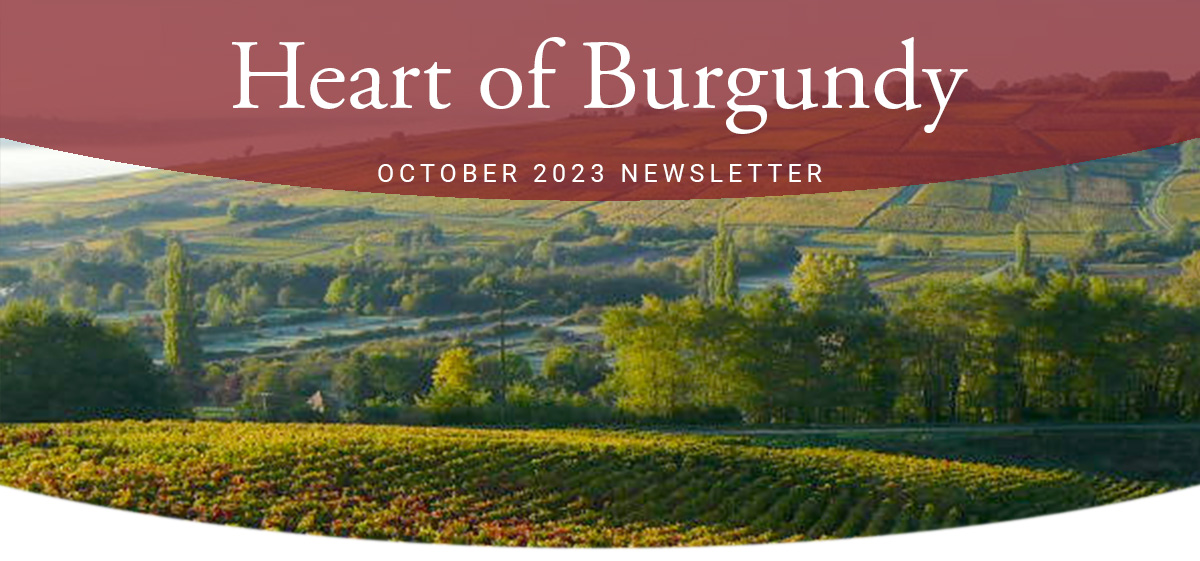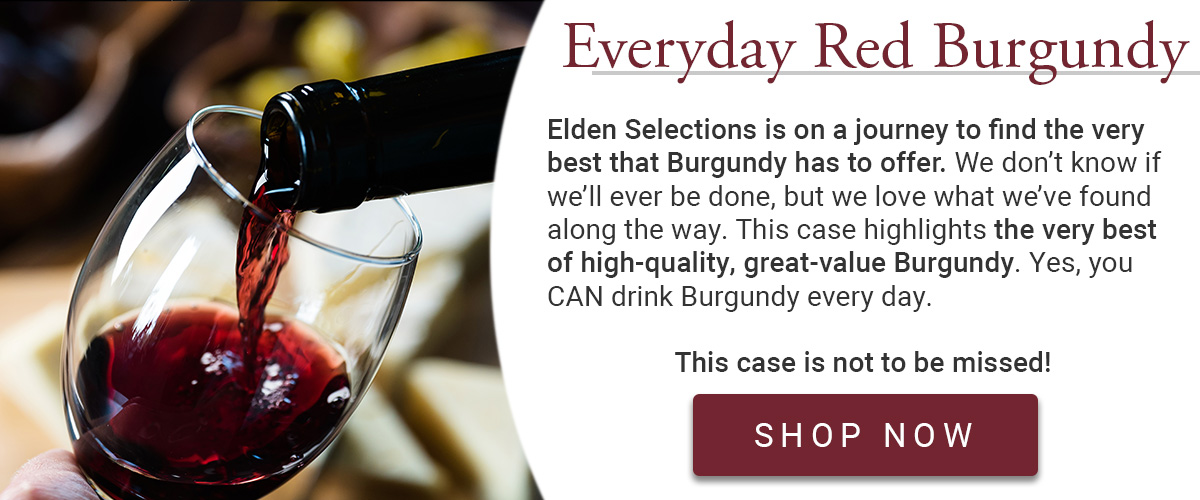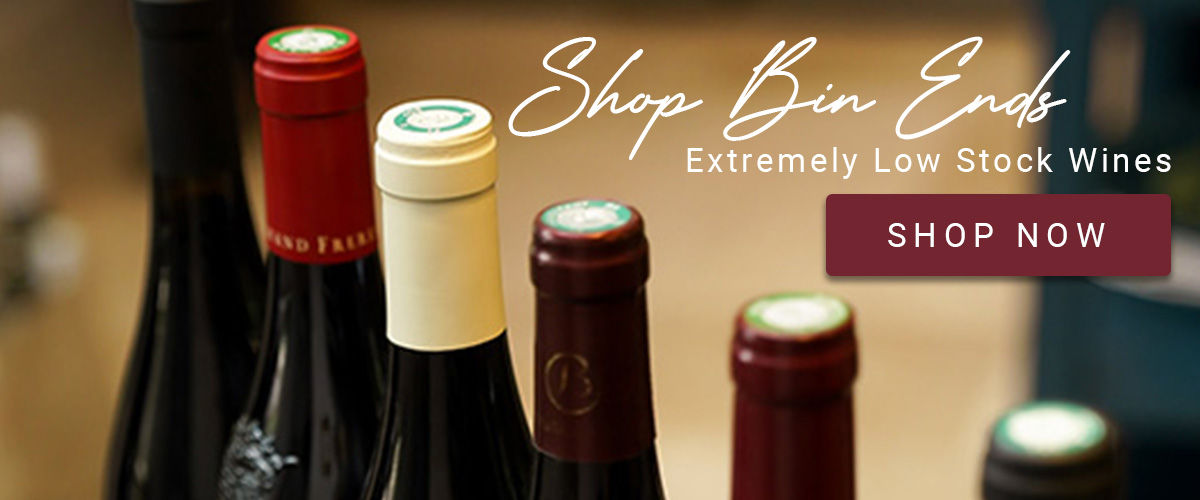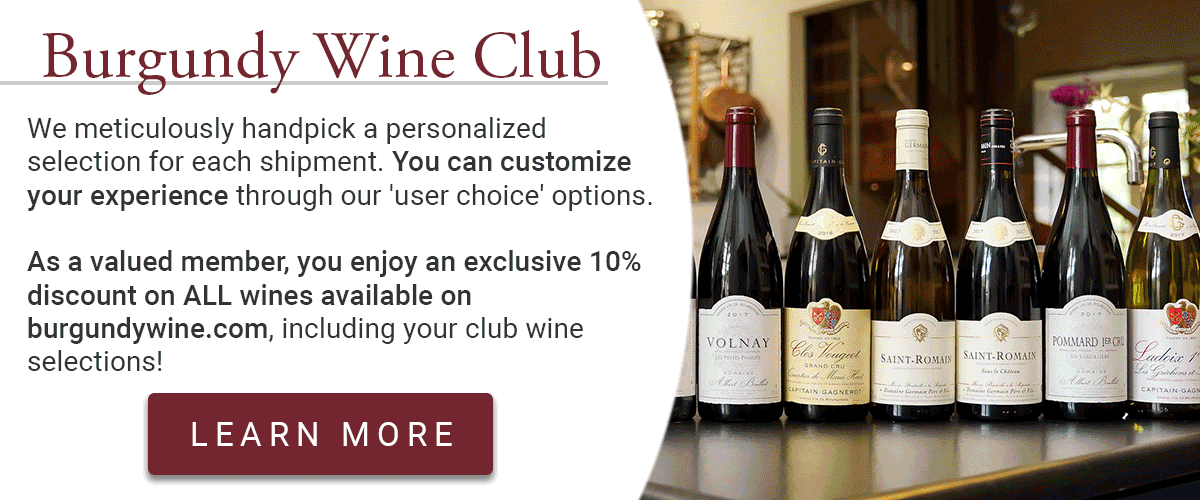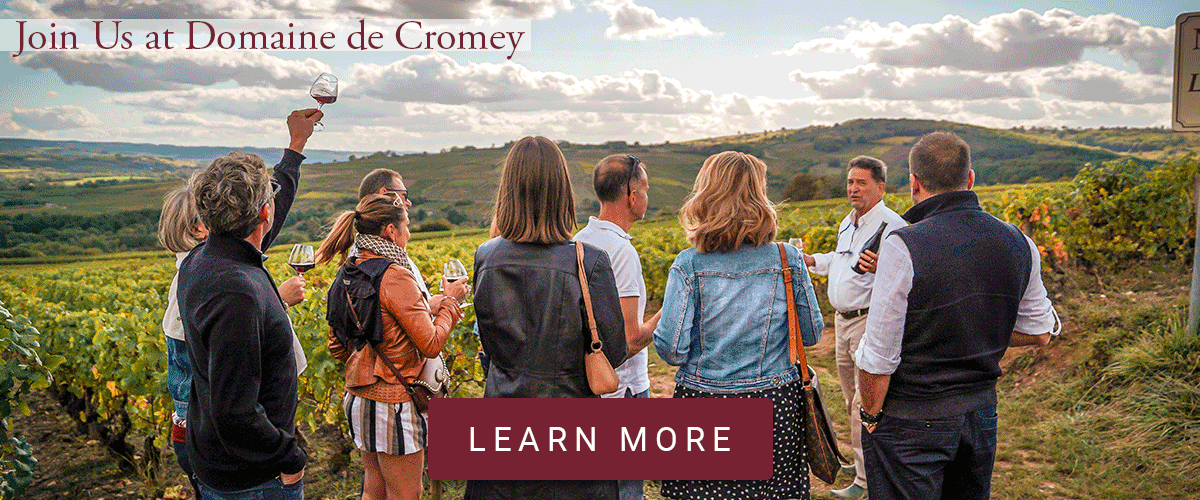Heart of Burgundy Newsletter - October 2023
In This Issue:
- Elden Selections's Palette Advisor - Your Online Taste Guide
- Right On The Nose: How to Understand Aromas in Burgundy Wine
- Wine 101: Aromatics in Wine
- Burgundy Harvest 2023
- Our Favorite Offers This Month
Elden Selection’s Palate Advisor – Your Online Taste Guide

Have you checked out Elden Selection’s online Palate Advisor tool yet? It’s a powerful new way to find wines that fit to your tastes and palate preferences. These are not just labels to fit a wine into a category though; these tasting notes are the result of thirty years of living and loving Burgundy. The Domaine de Cromey—home of BurgundyWine.com by Elden Selections— is imbued with that spirit. It’s an organic, uncompromising, passionate pursuit of excellence in the simplest things. The wines that the palate advisor recommends for you are from masterful winemakers—their best wines, that we’ve followed from vineyard to bottle, vintage to vintage. Just two examples of categories you can try out are below - Full Bodied Reds and Crisp, Flinty, Limestone Whites.
Full-bodied Reds
Burgundy may not have the sort of powerful reds you’d find in California Cabs of Rioja Reserva, but it can certainly compete with its full-bodied reds of an altogether different character. There are some big guns here, but the difference with our wines is that they don’t come with big name prices. The best Premier Cru reds from our expert producers can more than compete the world over.

For example, a Pommard ‘Les Rugiens’ from Domaine Michel Rebourgeon could easily be a Grand Cru, and Bénigne Joliet’s Premier Cru from Fixin more than qualifies for that esteemed label and has now sold out in Elden cellars. (His wines from the Clos de la Perrière are so good, in fact, that they recently featured in the New York Times). Even an old-vine village-level wine from Gevrey-Chambertin like the ones Domaine Marchand Freres makes can give you a world-class full-bodied wine of both concentration and meatiness.
Also on this list of great, powerful reds are the wines we’ve bought at the renowned Hospices de Beaune and Hospices de Nuits wine auctions. These special wines are sold every year at the most famous charity wine auction in the world. Each year, wine professionals and connoisseurs gather in Beaune on the weekend of the third Sunday in November for the purest of Burgundian traditions. Proceeds from the sale are used to fund Beaune’s General Hospital and support the ongoing preservation of the Hospices building, now classified as a national monument.
Crisp, Flinty, Limestone Whites
It’s easy to forget sometimes that Chablis is a Chardonnay from Burgundy. But far from being just another dry white wine, it’s a very Burgundian thing, bursting with unusual and fascinating aromas and flavors. Nowhere else in the world makes as many crisp, flinty, limestone whites as well as Burgundy does. We may be a little biased, but the evidence is there for all to see in the superb small producers we work with.

Chablis from the Domaine Oudin has classic sweet river-rock minerality and floral freshness, and is a meticulous perfectionists’ Chablis ‘tout-court’ (as the locals call the ‘village’ appellation). Jean Dauvissat Pere et Fils Chablis 1er Cru ‘Vaillons’ is a Chablis with a slightly ‘fatter’ more vigorous character, but always with that lingering minerality. You can also look at some of the whites from the Mâconnais like Pouilly-Fuissé and Saint Veran; or try whites from the very southern part of the Cote de Beaune from the quarries of Chassagne-Montrachet or Santenay.
Here at Elden Selections we view our role very much as a curator of wines, spreading the word—and the joy—of the best small producers in Burgundy. “Our process is very selective, developed over many years,” says Elden Selection’s Dennis Sherman. “We curate a broad selection of wines across appellations, producers, climats and vintages. Local knowledge and an internet-only approach allows us to offer the foremost selection of high end, small-production Burgundies at exceptional value.”
Back to Top
Right On the Nose – How to Understand Aroma in Burgundy Wines

The wine world lost one of its pioneers recently with the death of oenologist Jean Lenoir, at the age of 85. When some would focus only on the taste of a wine, for Lenoir it was the aroma of wine that interested him, and that he devoted almost his entire career to. A former paratrooper, Lenoir took an unexpected career path and began working at the Maison de la Culture in Chalon-sur-Saône. He studied oenology at Dijon University and developed a tool to help understand the aromas, which he would use in lectures. Known as Le Nez du Vin, it is still in use today and now contains 54 variously categorised aromas, accompanied by a best-selling book. The business continues under the stewardship of Lenoir’s daughter, (who is said to have been baptised with Champagne). But what are these aromas, and do they really play such a key role in wine tasting as Lenoir advocated?
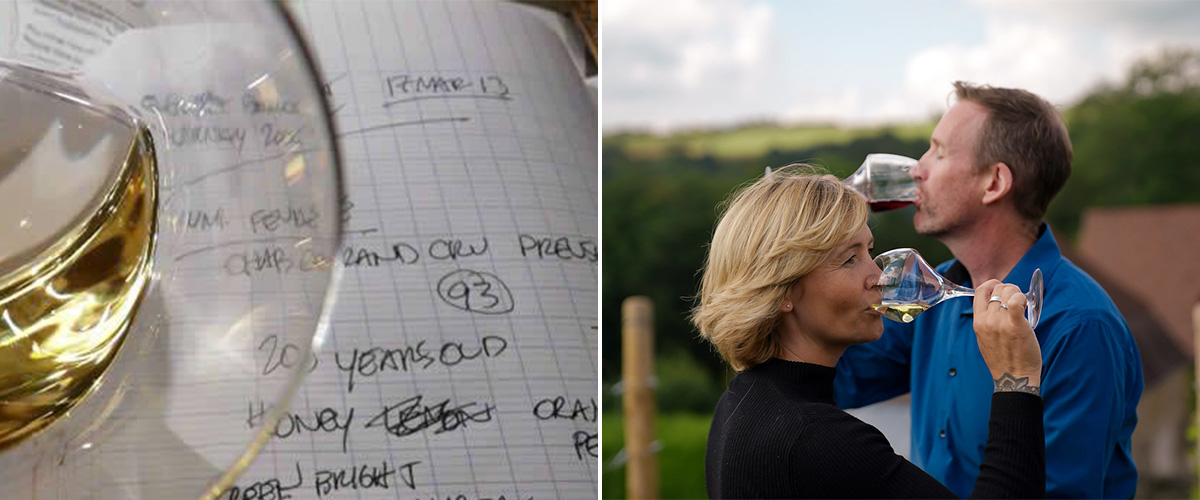
The answer, of course, is yes. Before we taste wine we smell it, evaluating the aromatic compounds and their intensity. Smells are dealt with by the olfactory bulb in the front of the brain and can link to your memory and your historic experience of smells. We need to explore the aromas to truly discern the nuances in wine. This prepares us for the taste in the mouth, or as the French say "mise en bouche" (get your mouth ready to taste).
Appreciating a wine means noticing its color, aroma and finally its taste, and appreciating how these elements work together. In Burgundy, this is particularly important because the wines of this region have unique subtleties thanks to the varying Burgundy geology (‘terroir’) and also the input of the individual winemaker themselves. To try wines from a variety of such terroirs and producers, why not visit the wine shop on BurgundyWine.com by Elden Selections?
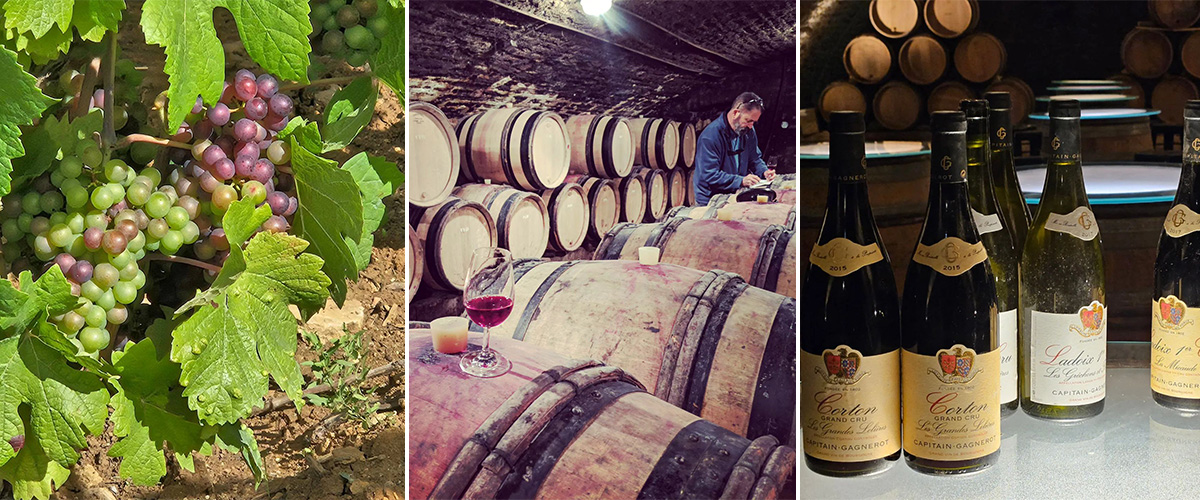
There are generally three types of aromas when we speak about wine, which are helpful to keep in mind:
- Primary aromas (derived from the grapes themselves). These might be fruity, reminiscent of black or white fruits, flowers, menthol or cassis.
- Secondary aromas (coming from the fermentation or the barrel itself). These could be buttery or slightly burnt in nature, or oaky, depending on the production method of the wine and how it has been aged.
- Tertiary aromas (which develop through the aging process and the natural evolution of the wine over time). You may hear these aromas described as the wine’s bouquet. Here we might be talking about a whole range of flavors, some of which you may think sound odd or unappetising, but which often make sense when viewed in the round, with the wine’s other characteristics. They might include nuts, vanilla, earthy scents like truffle or mushroom, coffee, spices, smoke, and even leather.
In order to fully experience these aromas on the nose, it is important to use a wine glass which allows the wine to show itself to you. You can read more on how to select the perfect Burgundy wine glass here, but suffice to say that you can consider three stages in enjoying the olfactory (scent) element of a wine: the first nose (smelling the wine before swirling); the second nose (swirling the wine and then smelling); and finally retronasal (taking a sip of wine and sucking air through your mouth, allowing you to ‘taste’ the aromas).
There’s a fair amount of science behind wine tasting, but don’t let it put you off—there can be as much or as little as you want to involve, as long as you give the wine a chance to introduce itself to you on the nose and on the palate. Aromas are of course also found in food—another way of finding complementary foods to eat with wine, for the full gastronomic experience of Burgundy. In other words, have the confidence to follow your nose—just like Jean Lenoir.
Back to Top
Wine 101: Aromatics in Wine

You’ve probably heard the term ‘aromatic’ in relation to grapes and the wines they make. Very often it refers to grapes from Spain, Italy, Germany, and Hungary such as Albariño, Moscato, Gewürztraminer or Cserszegi Füszeres. You may be thinking, “But no Burgundy grapes or wines are in that list.. does that mean Burgundy wines are not aromatic?” Most definitely not… Some of the most unique and complex wines on BurgundyWine.com by Elden Selections are rightly known as aromatic wines. Let’s take a look at what we mean by aromas and aromatics in wine.
The word ‘aroma’ is defined in most dictionaries as ‘a strong, pleasant smell, usually from food or drink’. In wines it most often means ‘fruity’ or ‘floral’ – anything from rose, jasmine and geranium, to grapefruit, apple or peach.
But it can be broader than this, as the etymology of the word shows (it comes from Anglo-French aromant, "balm," borrowed from Latin arōmat "fragrant substance, spice.") So although it indicates fruity and floral aromas which are sweet, it can also point to a wider array of savoury smells such as pine or other woods, truffle, resin, tar, oils and balms.
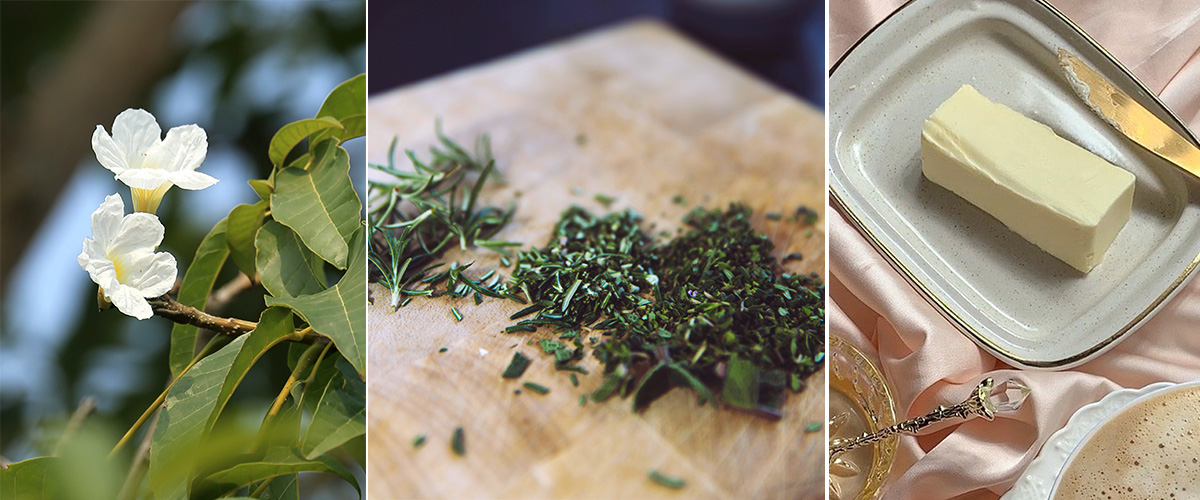
The science behind these aromas is complex but important. In brief, aromatic white wines may get their unique quality through the presence of aroma compounds known as terpenes, which are in fact the same compounds found in flowers. In white wines, you find a sub-group called monoterpenes, which helps give us those exotic aromas we mentioned above. In Chardonnays, especially old Chardonnay wine, you might find a compound known as Sotolon, which is also found in green herbs like lovage and fenugreek, giving sweet, nutty aromas. And for wines which undergo malolactic fermentation (to give them that buttery, creamy mouthfeel) they will probably have something called Diacetyl to thank for it.
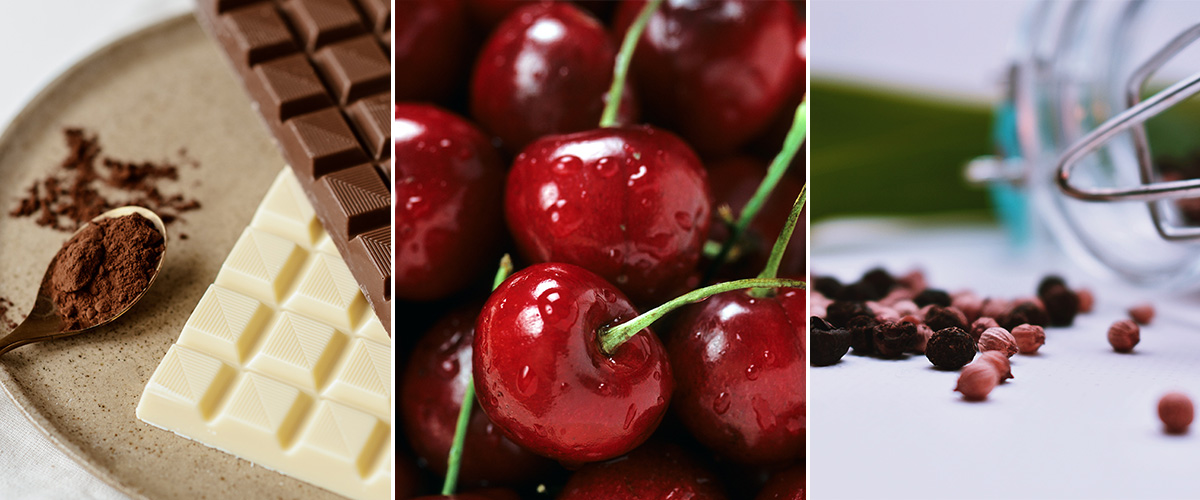
In red wines, if you get a dark chocolate or raw cocoa aroma, it may be coming from Pyrazines in the wine, which can sometimes be off-putting but can also be valued in aged wines, where they develop into sweeter, more cherry-like aromas. Peppery red wines may contain Rotundone, a compound found in peppercorns
The best way to discover these wines is by tasting them and exploring which flavors you favor. Burgundy wines have a rich variety of complex and fascinating aromas on offer. To take just a few examples from winemakers that Elden Selections work with:

- Domaine Alain Vignot Bourgogne Cote Saint-Jacques Vin Gris - This is a real Pinot Gris, a serious food wine which offers a complex aromatic palette due in large part to its flinty terroir.
- Hospices de Nuits, Nuits St Georges 1er Cru ‘Rues de Chaux’ - Deep color, with rich aromatics of red and black fruit, stone fruit, and notes of resin, undergrowth and delicate spice. The aromas on the nose complement those on the palate, too: notes of blackcurrant, cherry and licorice combined with undertones of resin and tar.
- Jean-Claude Rateau Beaune 1er Cru ‘Les Reversées - This rich wine has deep aromas of blackberry, violets and earth with hints of citrus, plum and spice. The palate is round and ripe with firm acidity and deep black fruits, ripe plum and earth going to a lovely long finish.
When it comes to finding complementary foods to enjoy with aromatic wines, think Asian cuisine in particular, as the fragrance and spice of the wine matches well with the exotic food from this region. At the end of the day, all matches will depend on the type of grape and the style it was made in, but as well as Asian food you could try certain softer, creamier cheeses which allow the wine’s character to come through nicely.
Back to Top
Burgundy Harvest 2023

As we were putting this newsletter together, the harvest was in full swing here in Burgundy. In fact, we had just finished the second harvest of our own vines at the Domaine de Cromey, so we were deeply involved!
2023 in Burgundy, despite all of the heat, drought and flooding that happened to the north and south of us, came through relatively unscathed (with the exception of a few patches of hail damage in Meursault and the Chalonnais).
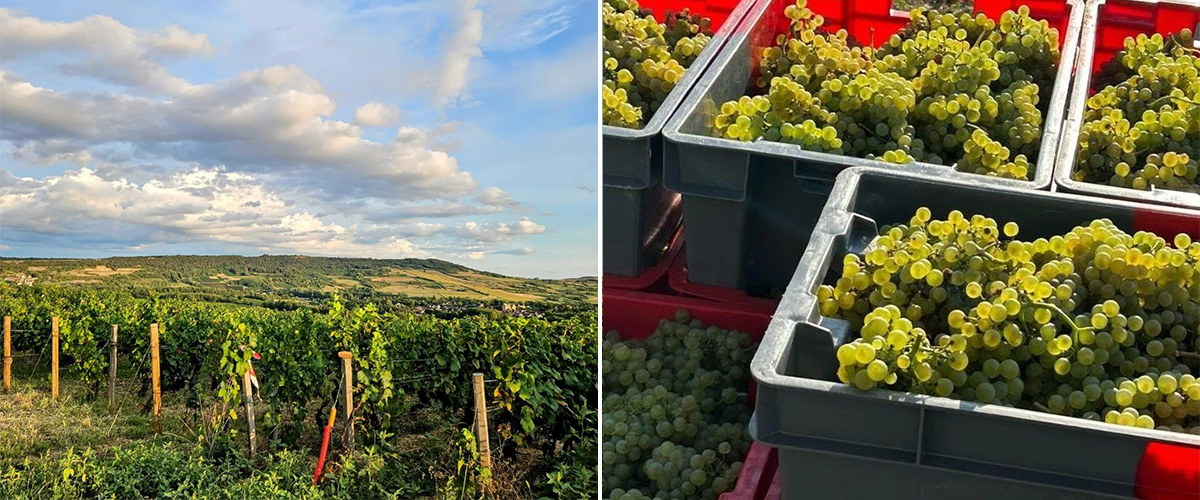
In fact, we’ve seen absolutely beautiful grapes, both red and white, coming into wineries all over the region. And lots of them. 2023 looks to be a bumper crop, and a very promising one at this stage.
I spent a lot of time walking in the vineyards in the weeks leading up to the harvest, and I tasted grapes that are sweet and juicy, full of spicy fruit, both Pinot Noir and Chardonnay. Even the skins and pips were ripening nicely, meaning that the level of phenolic maturity could be high. All of this points to a good volume of high-quality juice.
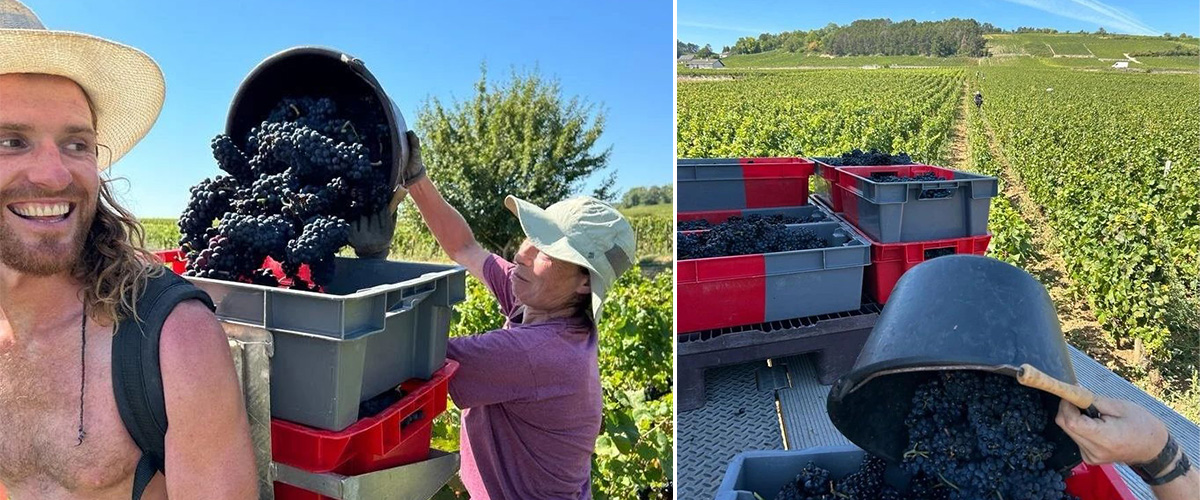
This will be welcome news to the winemakers, who saw tiny harvests in 2019, 2020 and especially 2021. And while 2022 was a healthy crop, it has only just satisfied the demand for Burgundy wine that had not been available in the previous years.
2023 should start to fill the cellars again, and hopefully keep the rising prices at bay.
But for the moment, patience. We are waiting to hear what the producers say as the fermentations and macerations get going. We’ll know more next month, and will keep you posted.
Back to Top
Our Favorite Offers This Month
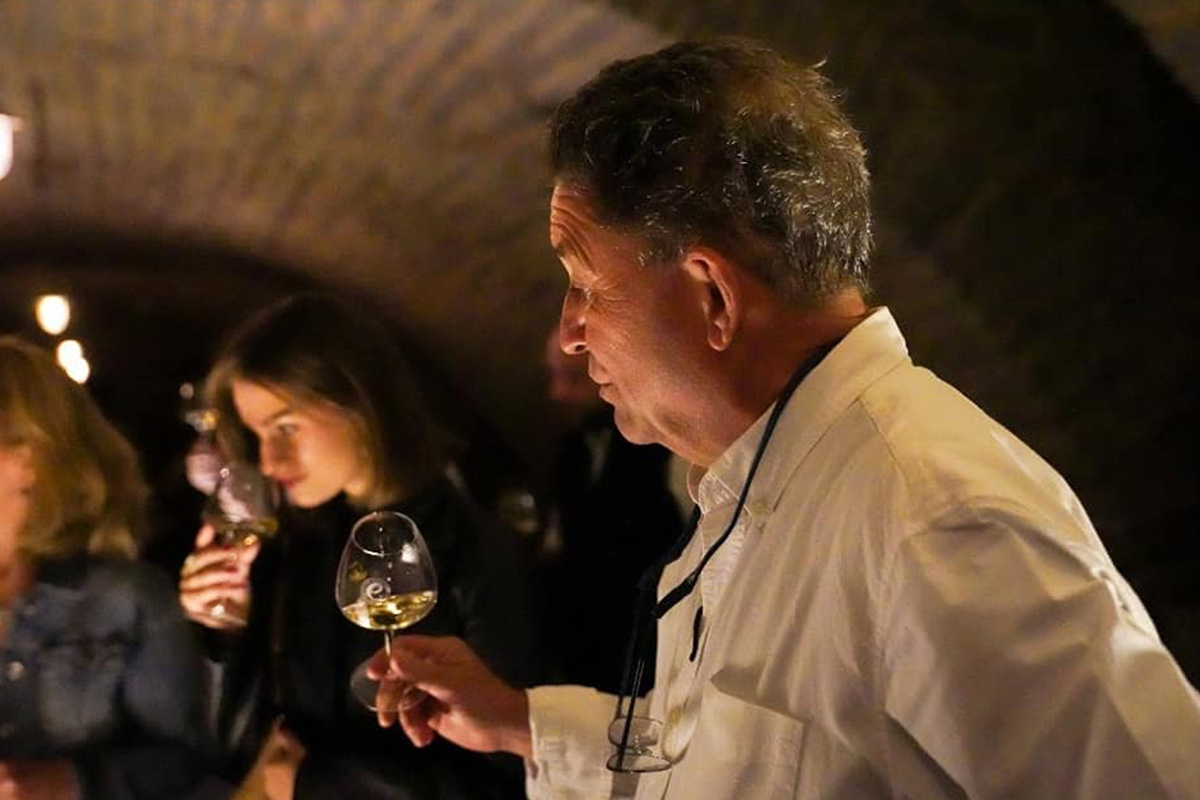
Here at burgundywine.com by Elden Selections, we strive to always bring you the best wines and the best values in Burgundy today. Here are some of our favorite offers this past month that you don’t want to miss:
2020 Red Harvest Case: An exceptional vintage, brilliantly fresh, pure, elegant and focused. Yes, the wines are ripe and concentrated, but there is good acidity that more than brings things into balance. This, in fact, defines the Burgundy 2020 style: high acidity and high concentration.
Experience Côte de Nuits Region Mixed Case: The Côte de Nuits is known for world-class Pinot Noir wines – it’s a cornucopia of superb reds, a jewel in the Burgundian crown. World famous wines. Such tiny villages. Such a narrow strip of land. Whatever the etymology, the quality and renown of this hallowed terroir - the northern half of the Côte d’Or - is beyond question.
Everyday Drinking White Burgundy Case: Reasonably Priced White Burgundy? Dedicated to the Proposition That You Can Drink Burgundy Every day. These wines all drink way above their appellation. At these prices, you need never again be afraid to open a Burgundy when you feel like it!
Experience Premier Cru Mixed Case: The Premier cru is the second-highest classification level, below that of Grand cru and above the basic village AOCs. Experience Premier Cru with this selection of our favorites in the classification.
Fall Favorites Mixed Case: Are you ready for fall? Ideal for setting a sophisticated tone at crisp autumn tables, this unique case offers the perfect opportunity to share the exquisite taste of Burgundy with your cherished family and friends. Indulge in the richness of each sip, as this curated collection adds a touch of elegance to your seasonal celebrations.
